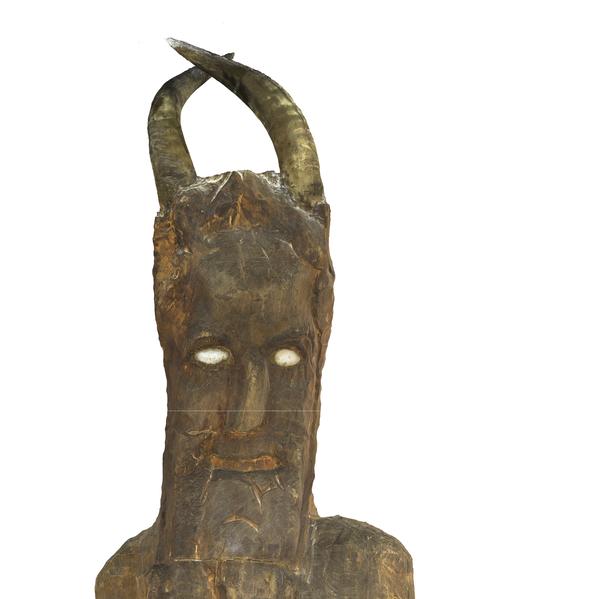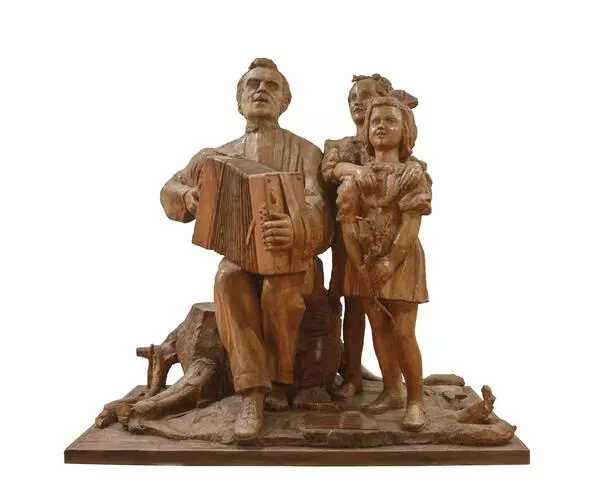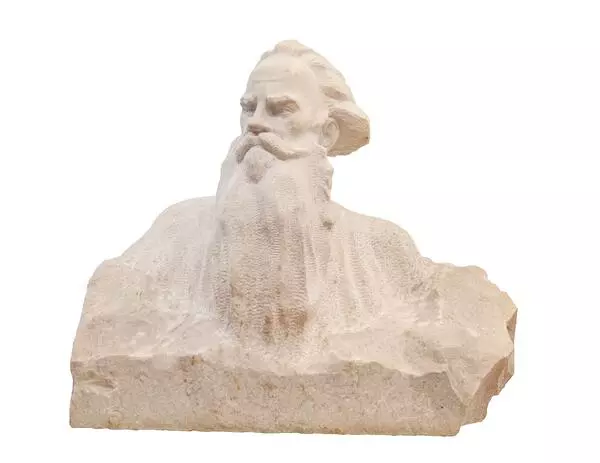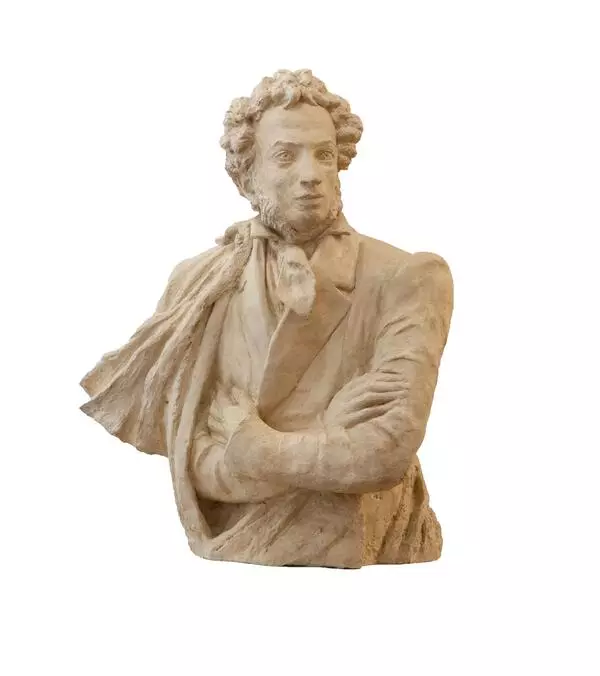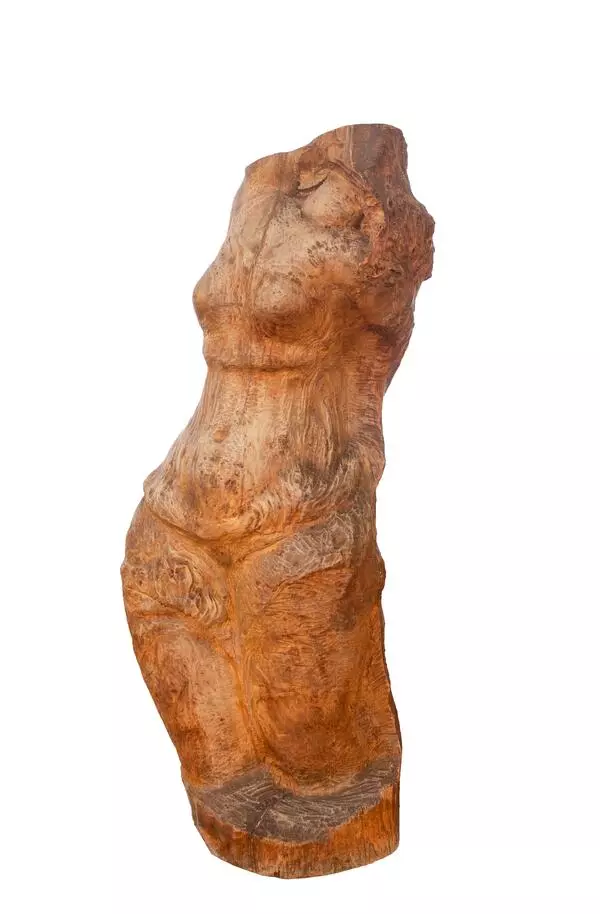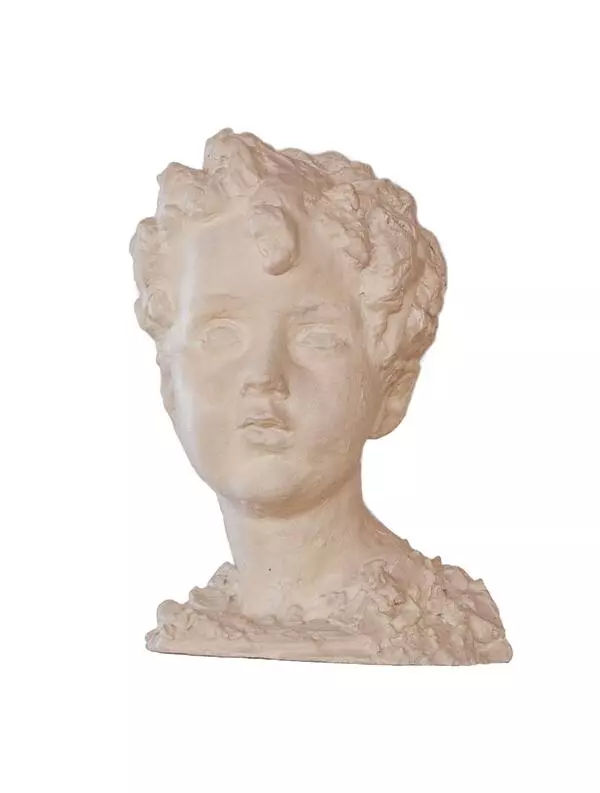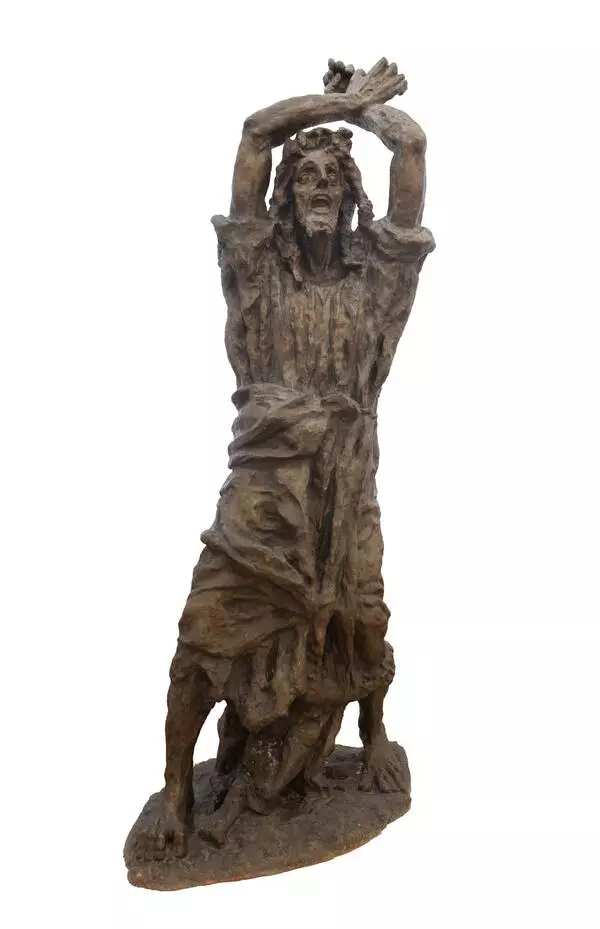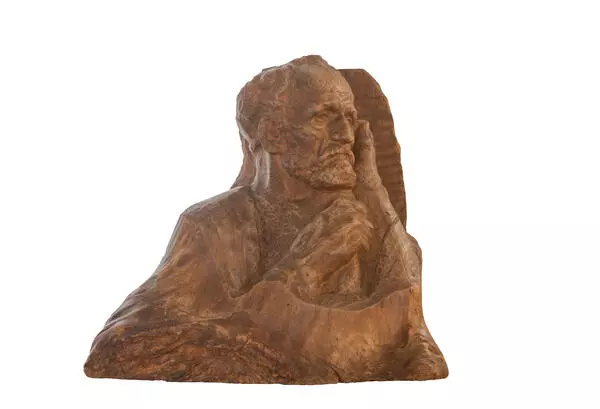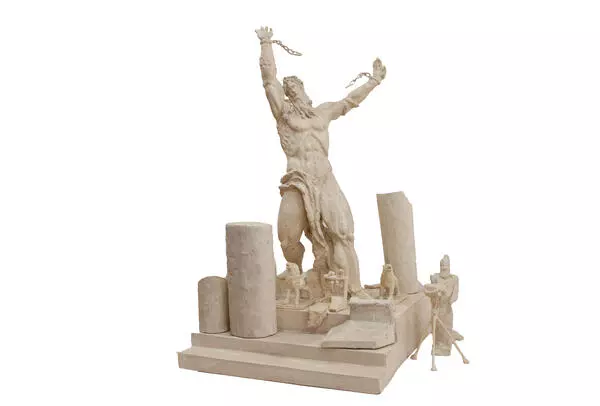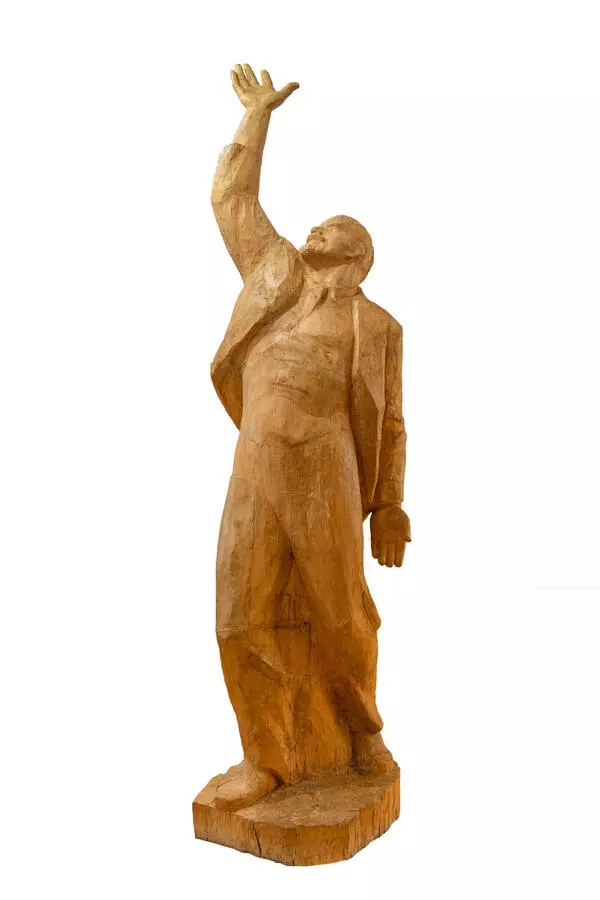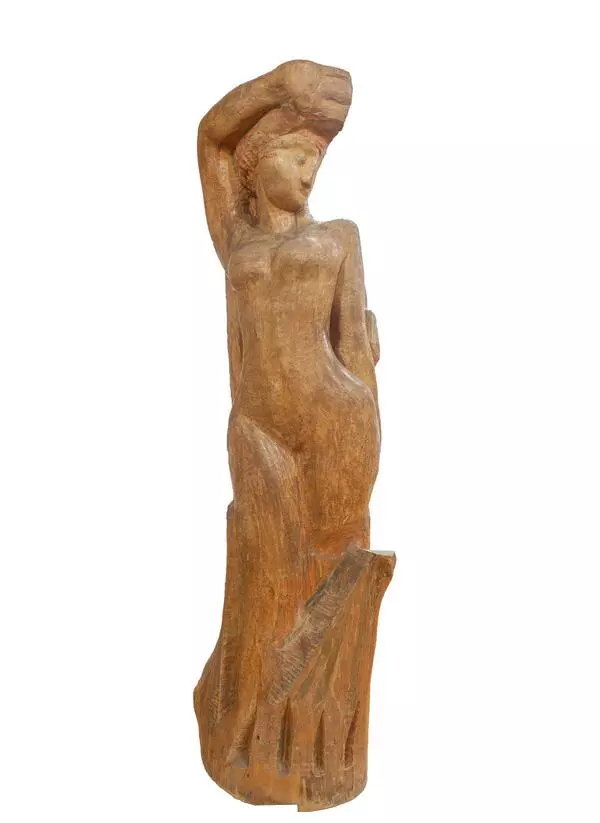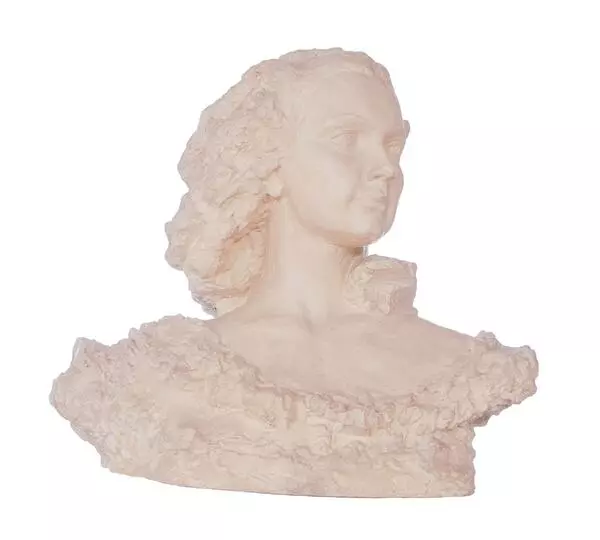Sergey Konenkov (1874 — 1971) became known in history as one of the main sculptors of the 20th century, the ‘Russian Rodin’, an original thinker and mystic. A peasant’s son, who carried his love for the native Smolensk region through his life, in Moscow he diligently created his reputation as an artist from the people, with whose pictures his fellow villagers covered izba walls. Interest in Russian antiquity and folk element meant a lot in the context of the Silver Age culture. It suffices to recall how popular were poems of another peasant by origin — the poet Sergey Yesenin.
The Leshy
Creation period
1910s
Dimensions
225х80х55cm
Technique
Wood, carving, stone, bone
Collection
Exhibition
5
Open in app#1
Sergey Konenkov
The Leshy
#2
#7
Konenkov studied art at the Moscow School of Painting, Sculpture and Architecture, and then at the St. Petersburg Academy of Arts. The first masterpiece of the sculptor is his 1902 diploma work Samson Tearing the Bonds, which seemed to the academicians too revolutionary and was destroyed. However, the reproduction of this work appeared in the magazine Mir iskusstva (World of Art) and later stood Konenkov in good stead.
The sculptor worked on the famous “forest series”, to which The Leshy (The Horned Leshy) belongs, in the 1910s. This is a two-metre statue with real bone horns. In Slavic mythology, the leshy was the master of the forest. In some legends, he appears as an evil spirit, in others — as a mischievous spirit that will never harm a person for no reason.
The sculpture came to the Dagestan from the Tretyakov Gallery collections at the end of the 1920s.
The sculpture came to the Dagestan from the Tretyakov Gallery collections at the end of the 1920s.
#8
The eyes of the leshy are made of natural stone. However, in his work Konenkov rarely used details brought from the outside in order not to disturb the ritual of communication with the wood. He was one of the first sculptors to turn to this material, and preferred to work with rough logs, stumps and billets. From his chisel emerged ancient Slavic deities, fairy-tale characters, chthonic monsters and heroes of the Russian folk epic.
#6
The “forest series” struck contemporaries by the unusual combination of folklore imagery with plastic finds of ancient sculpture. In parallel with the “forest series” Konenkov worked on the equally famous “Greek series”, seeking a synthesis of two powerful artistic traditions — classical and ancient Russian.
The poet and philosopher Vyacheslav Ivanov enthusiastically noted that Konenkov’s work was ‘imbued with the gleam of bonfires that went out long ago in front of shrines of wooden Peruns and Veleses of the ancient Rus, of forests and swamps’. Konenkov himself wrote that ‘our people from time immemorial have lived among an immense ocean of forest. No wonder we have so many songs, legends, fairy tales, proverbs, sayings, riddles connected with the forest… I love the forest and I’ve been working with it since my youth, or rather, since my adolescence’.
#9
P.S. Gamzatova Dagestan Museum of Fine Arts
read morehide
00:00
00:00
1x
The Leshy
Creation period
1910s
Dimensions
225х80х55cm
Technique
Wood, carving, stone, bone
Collection
Exhibition
5
Open in app
Share

